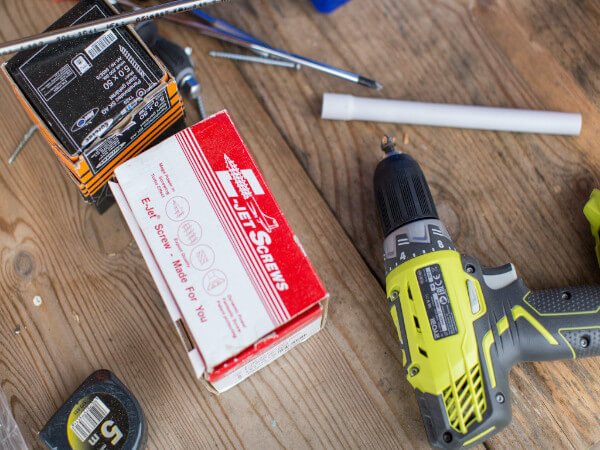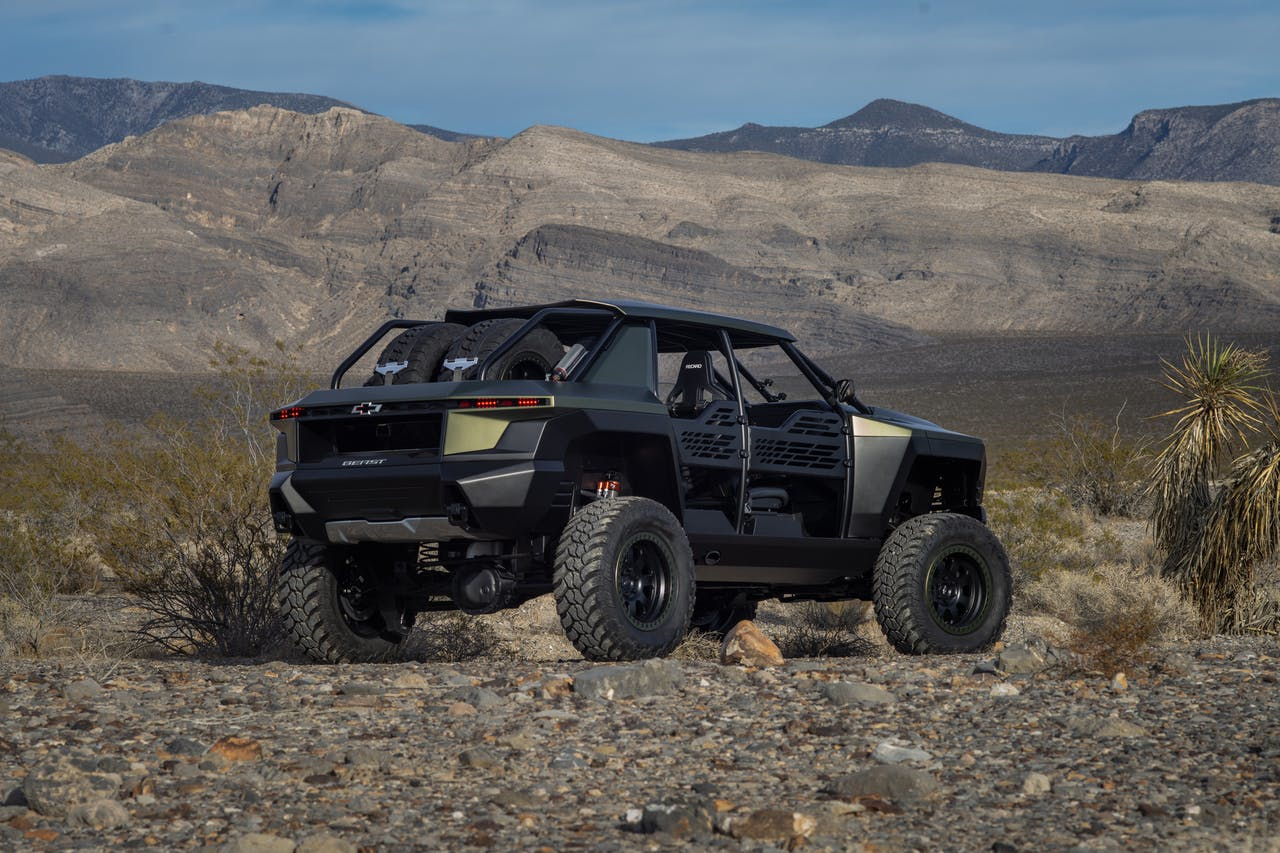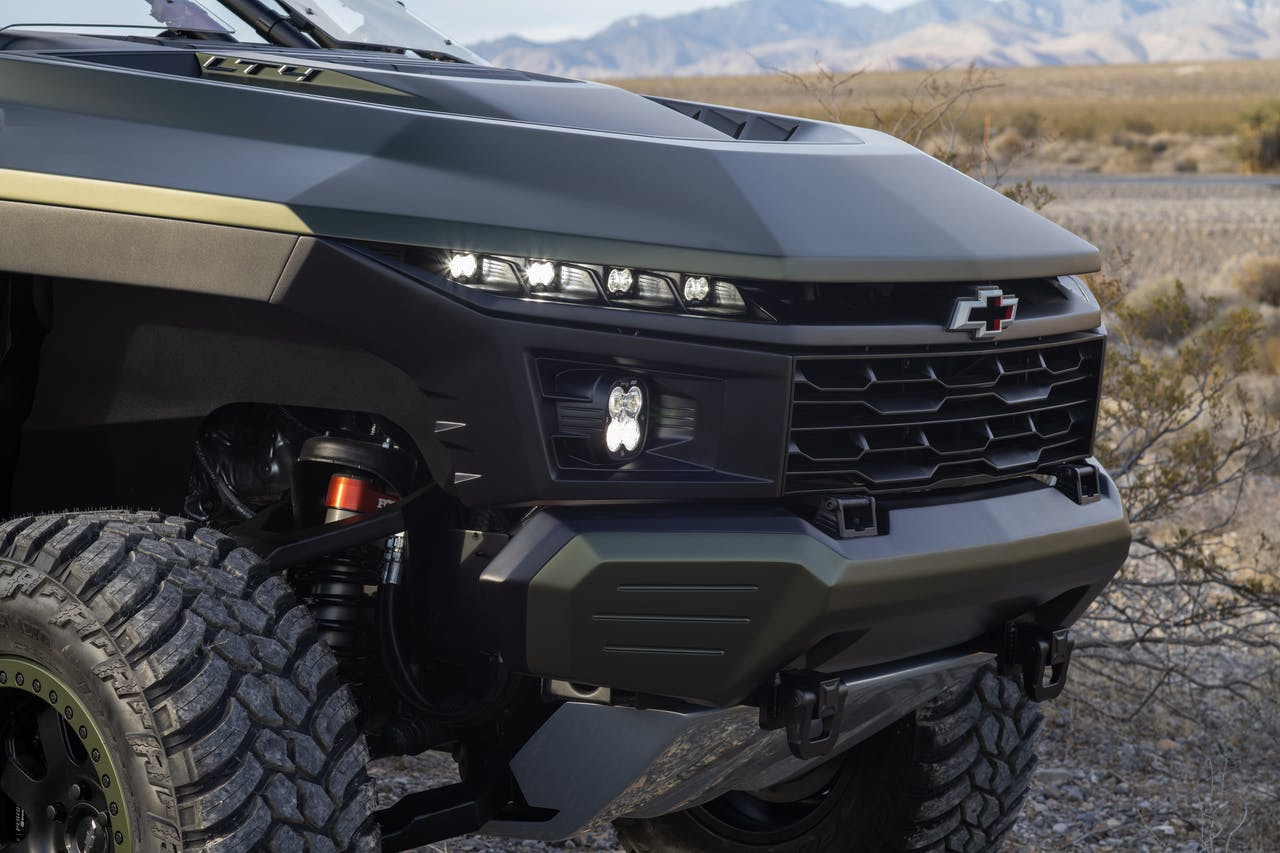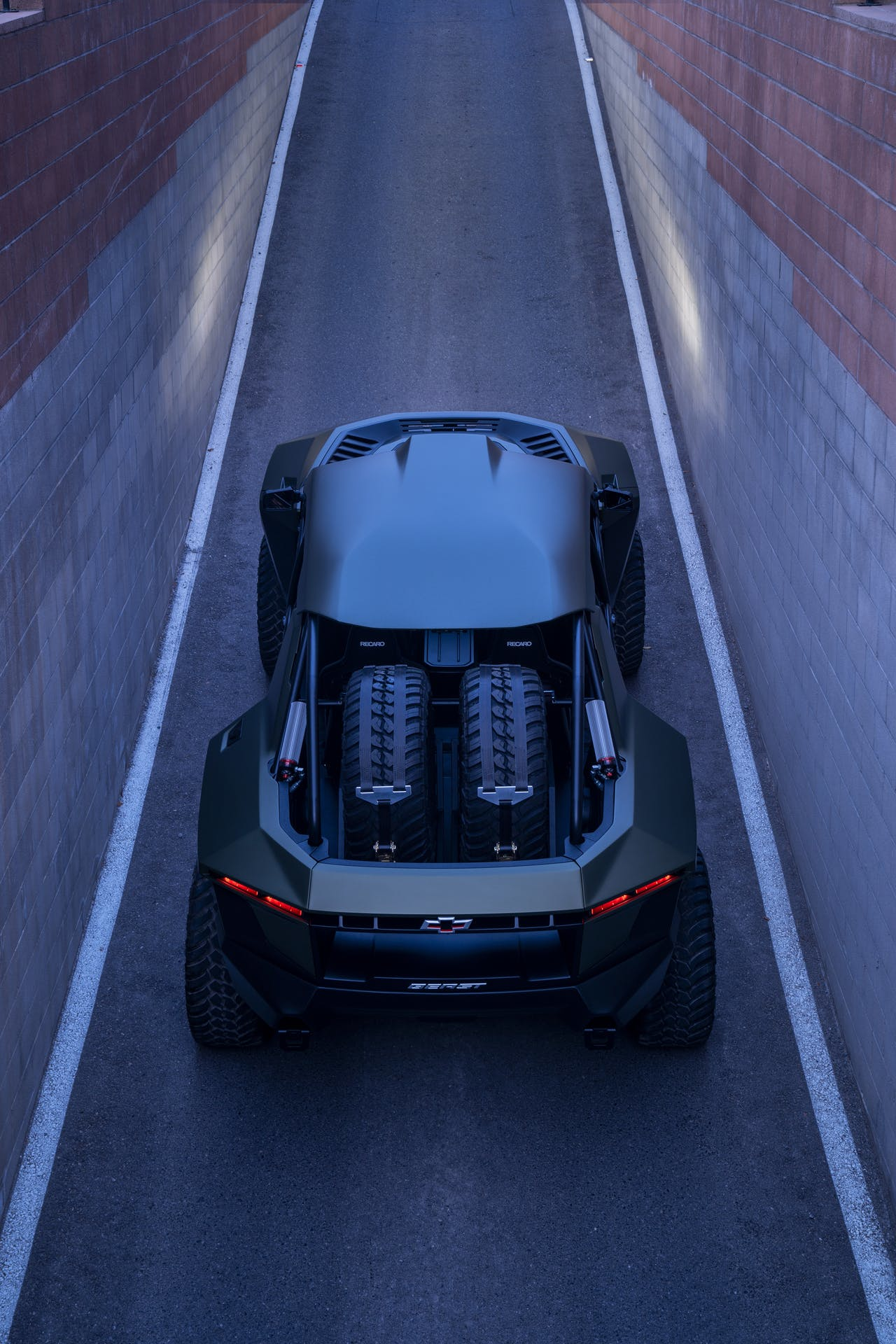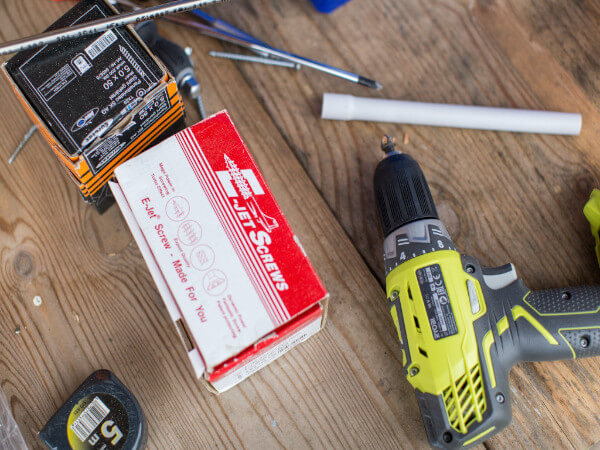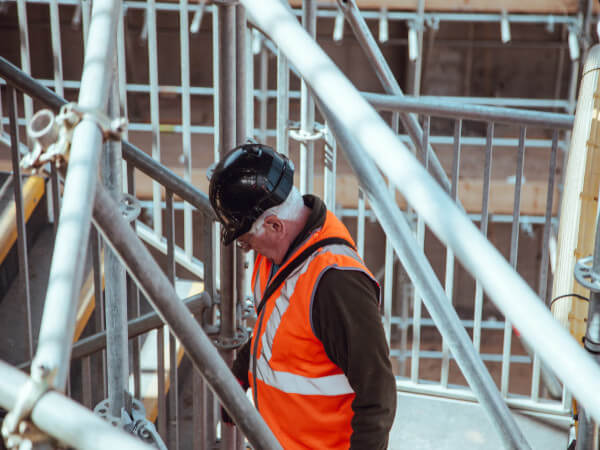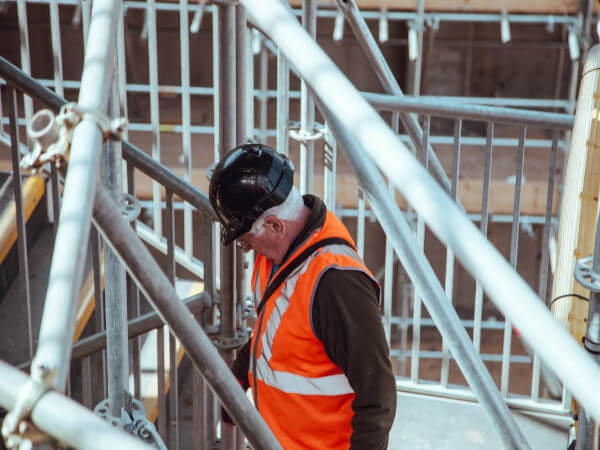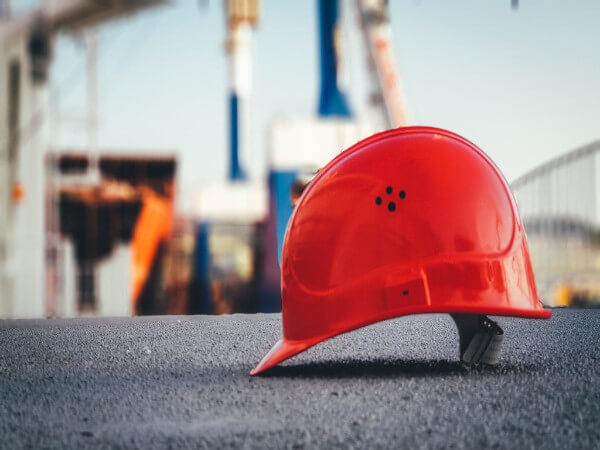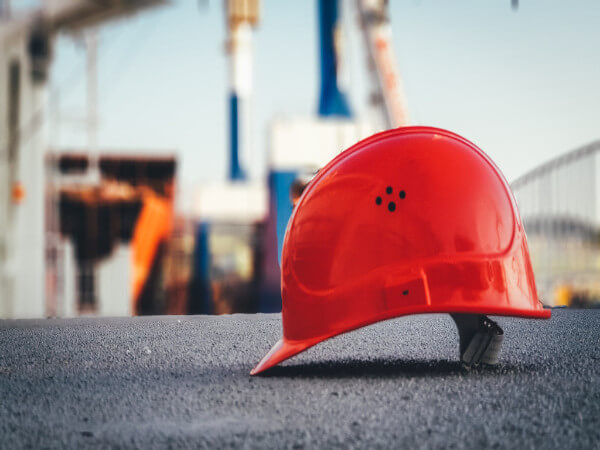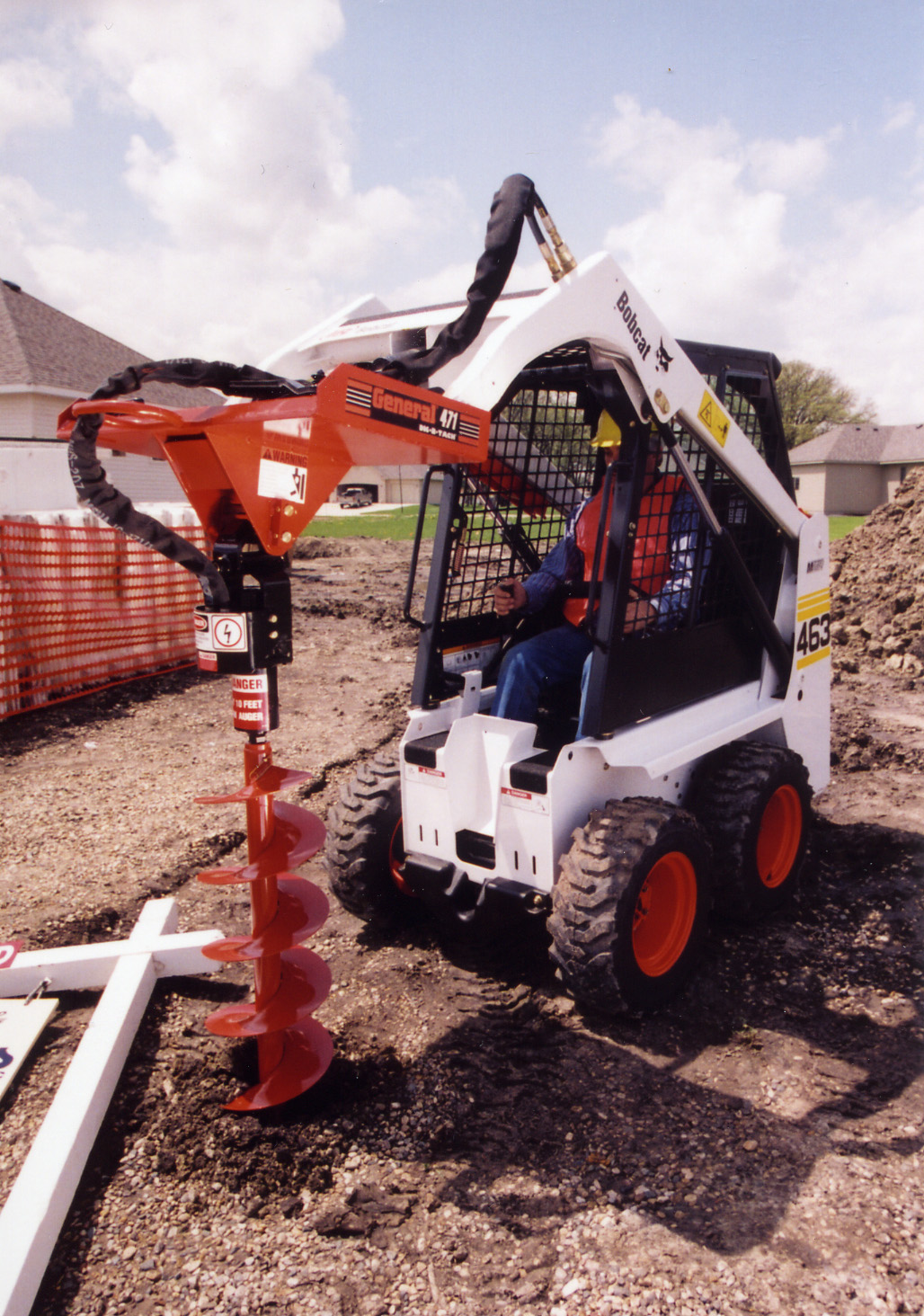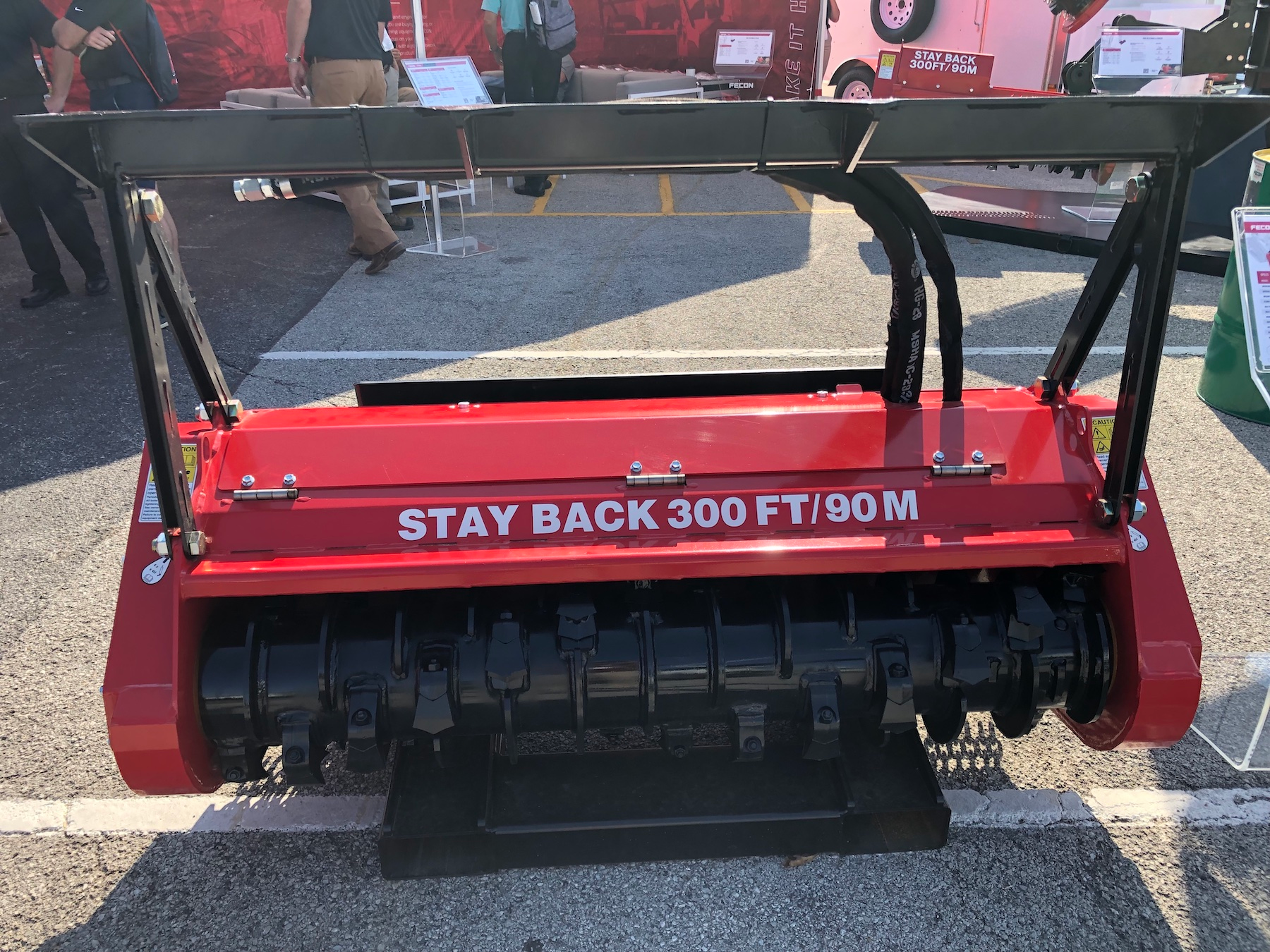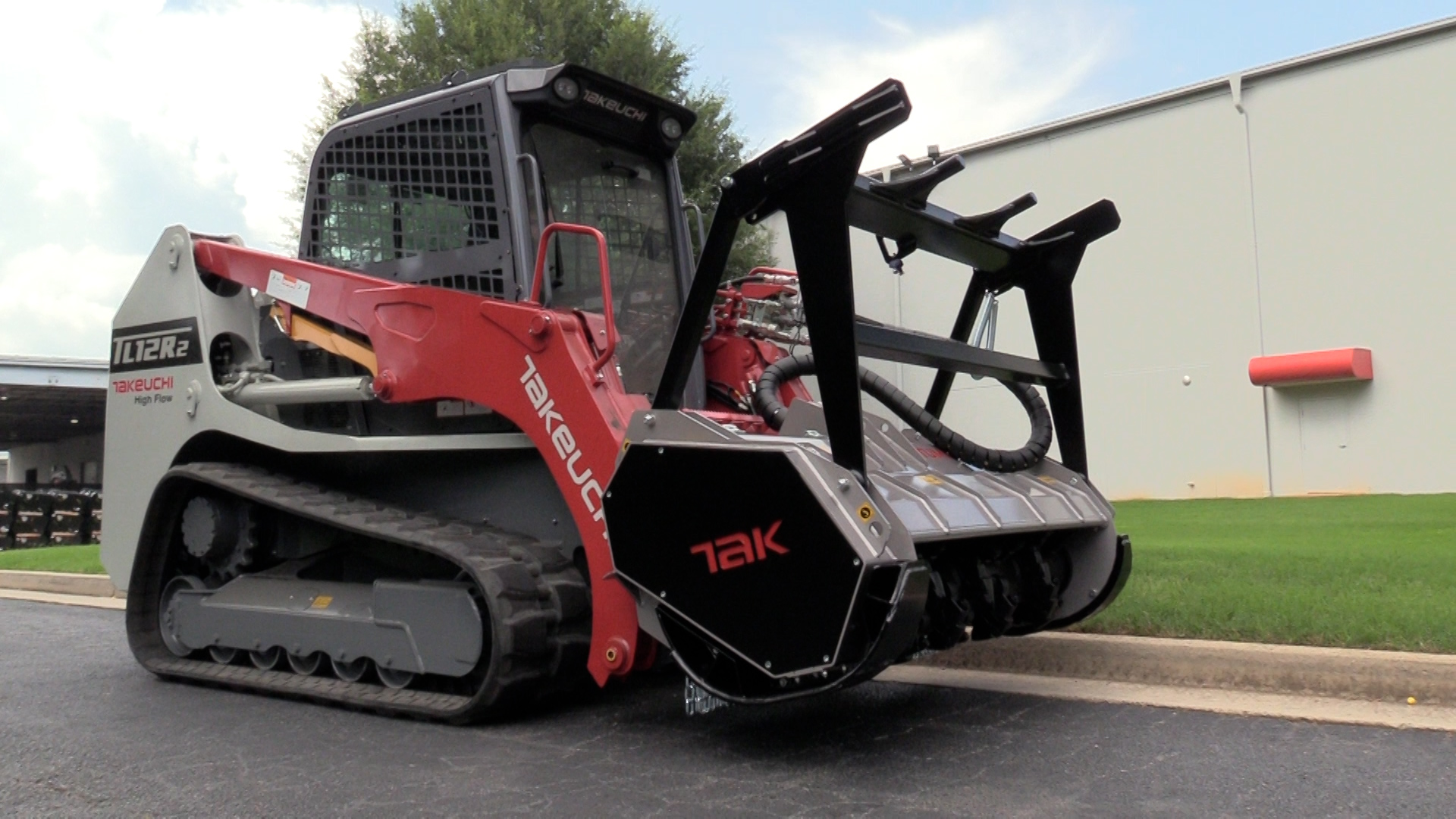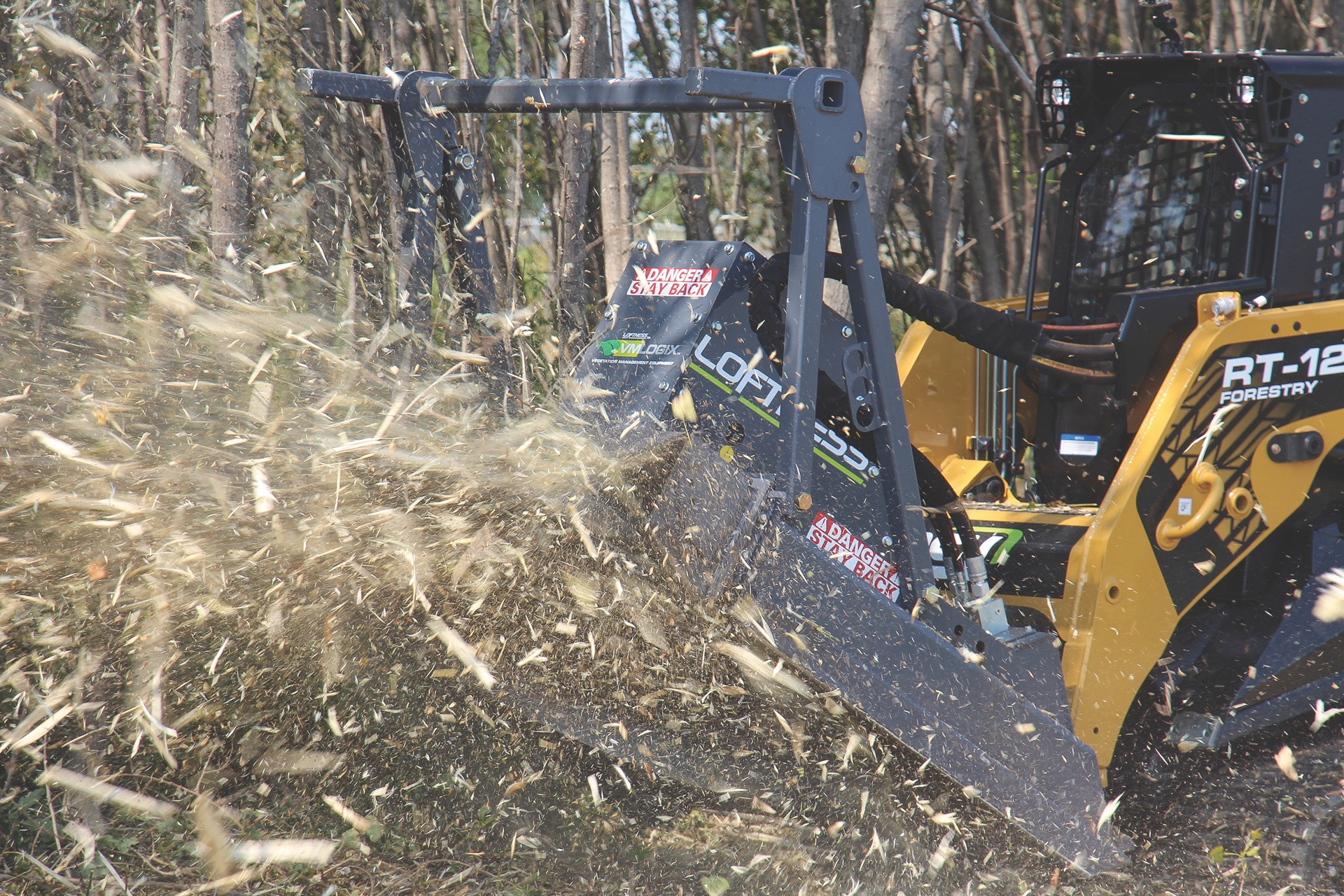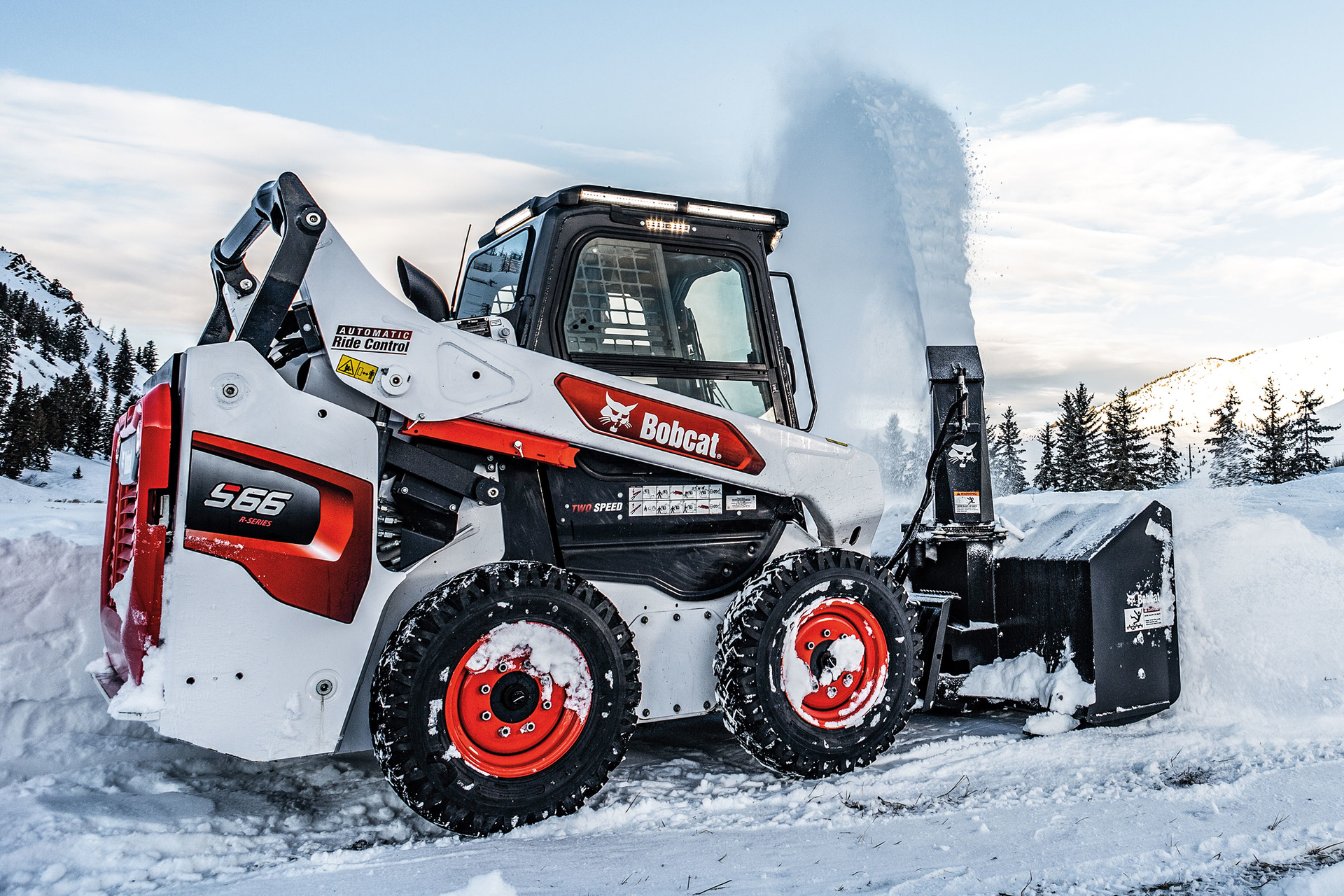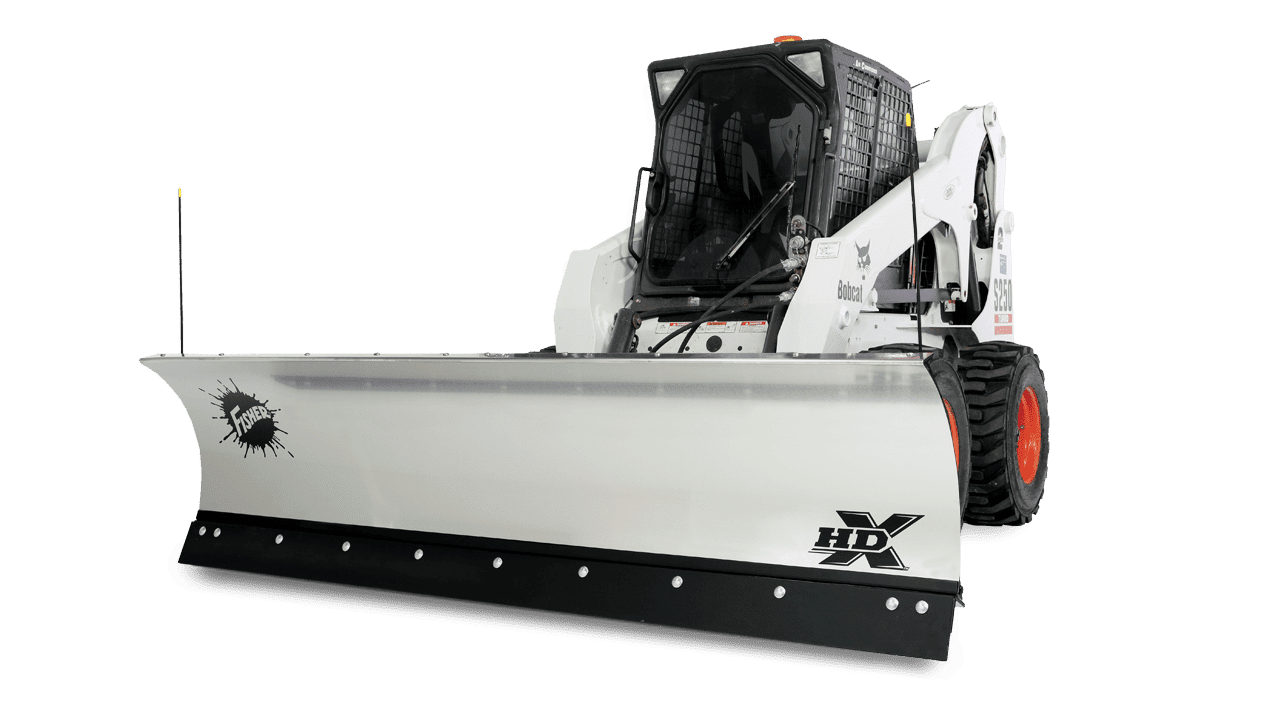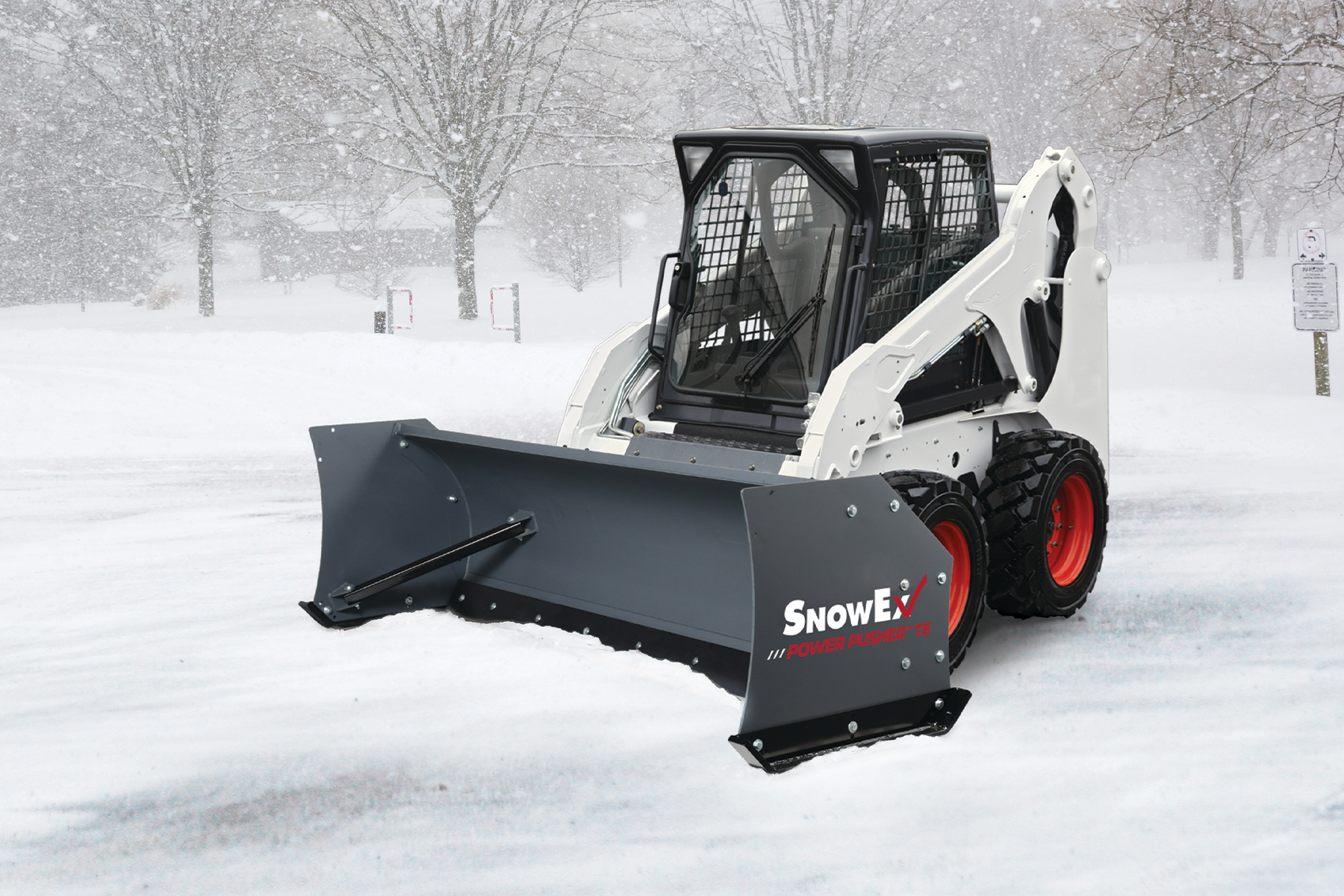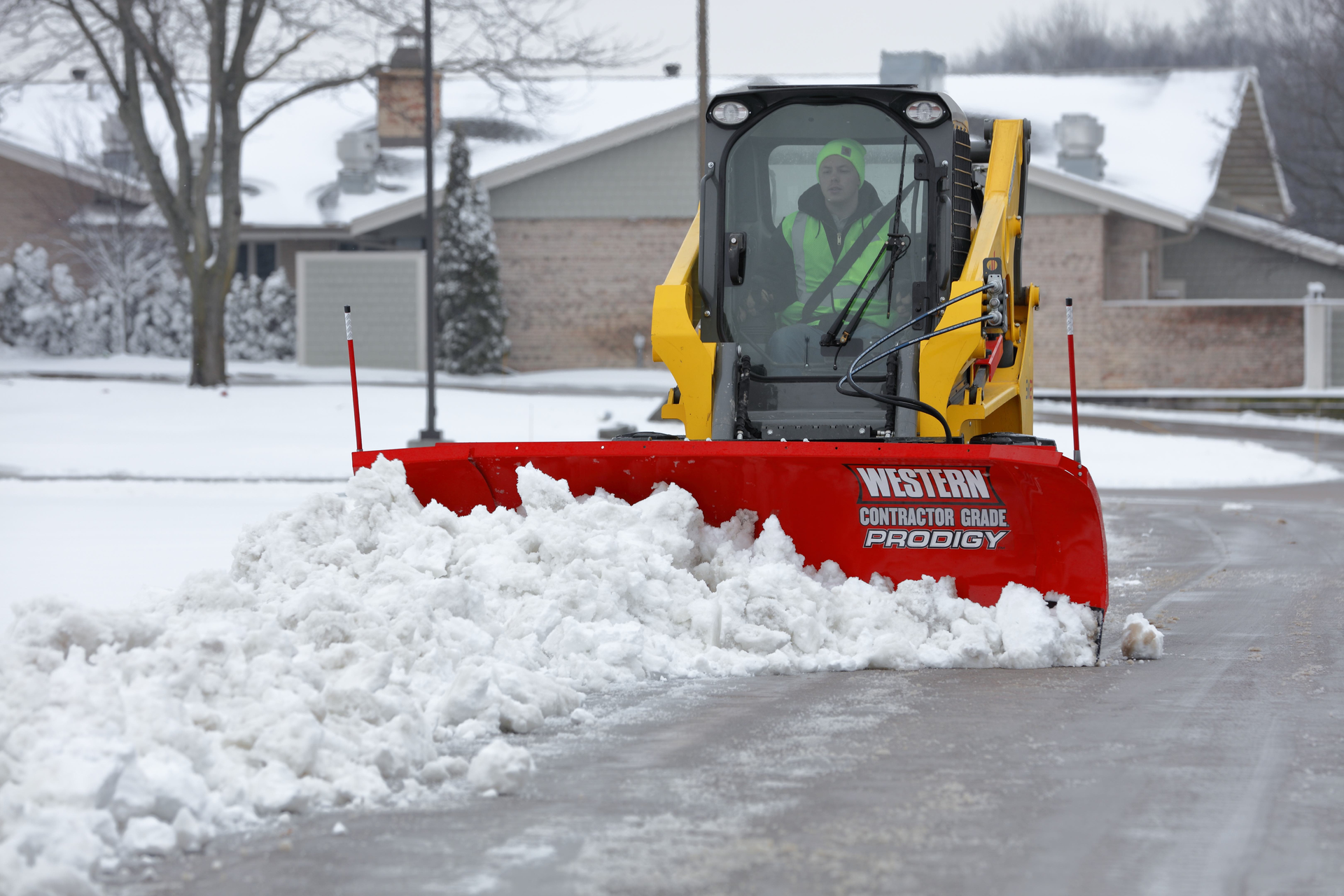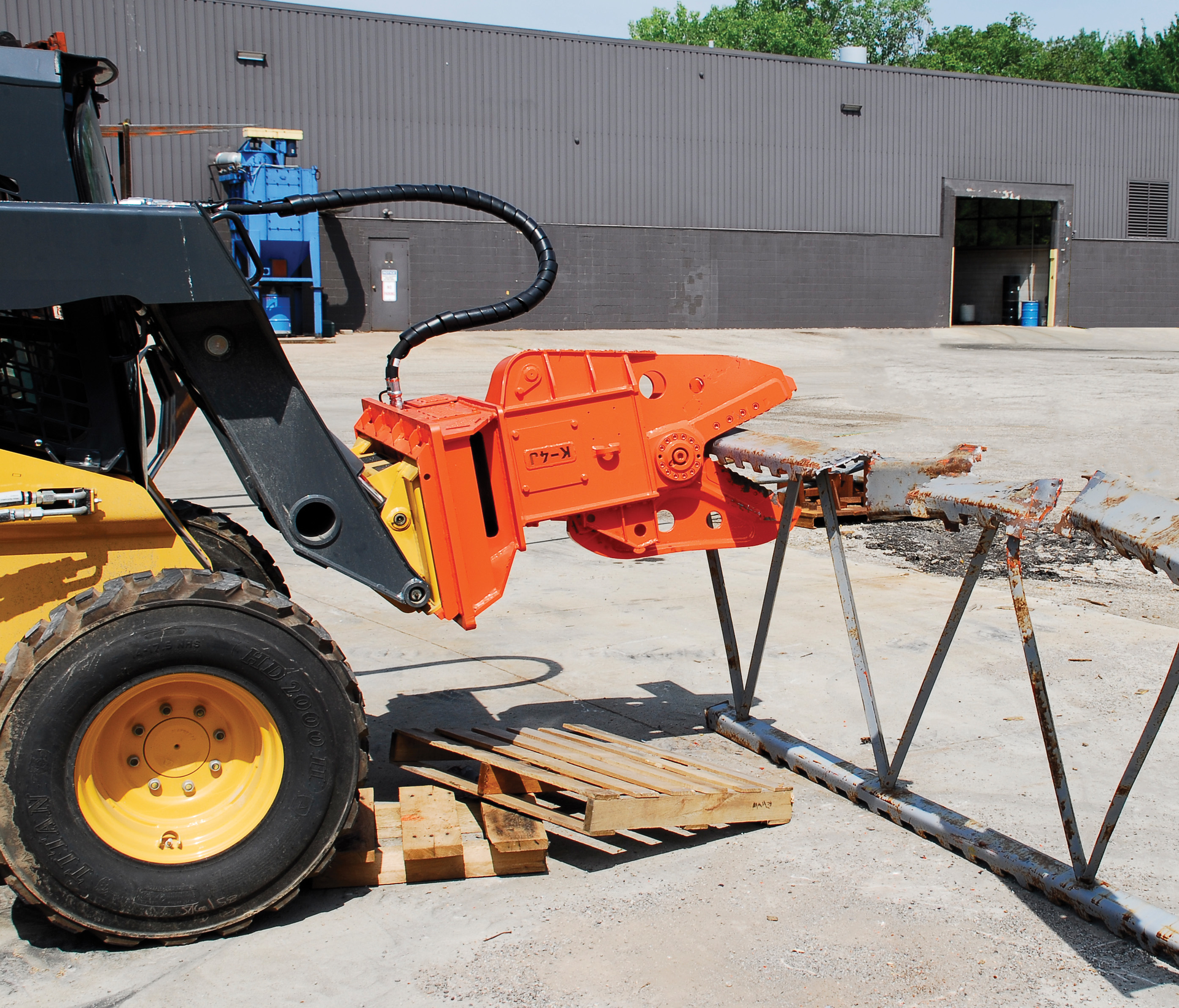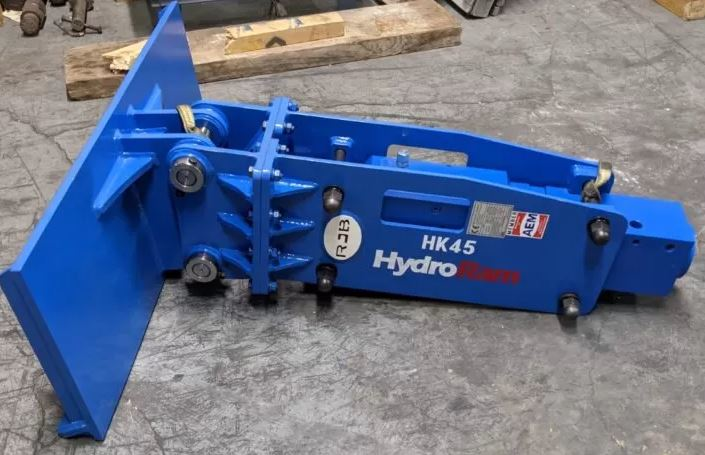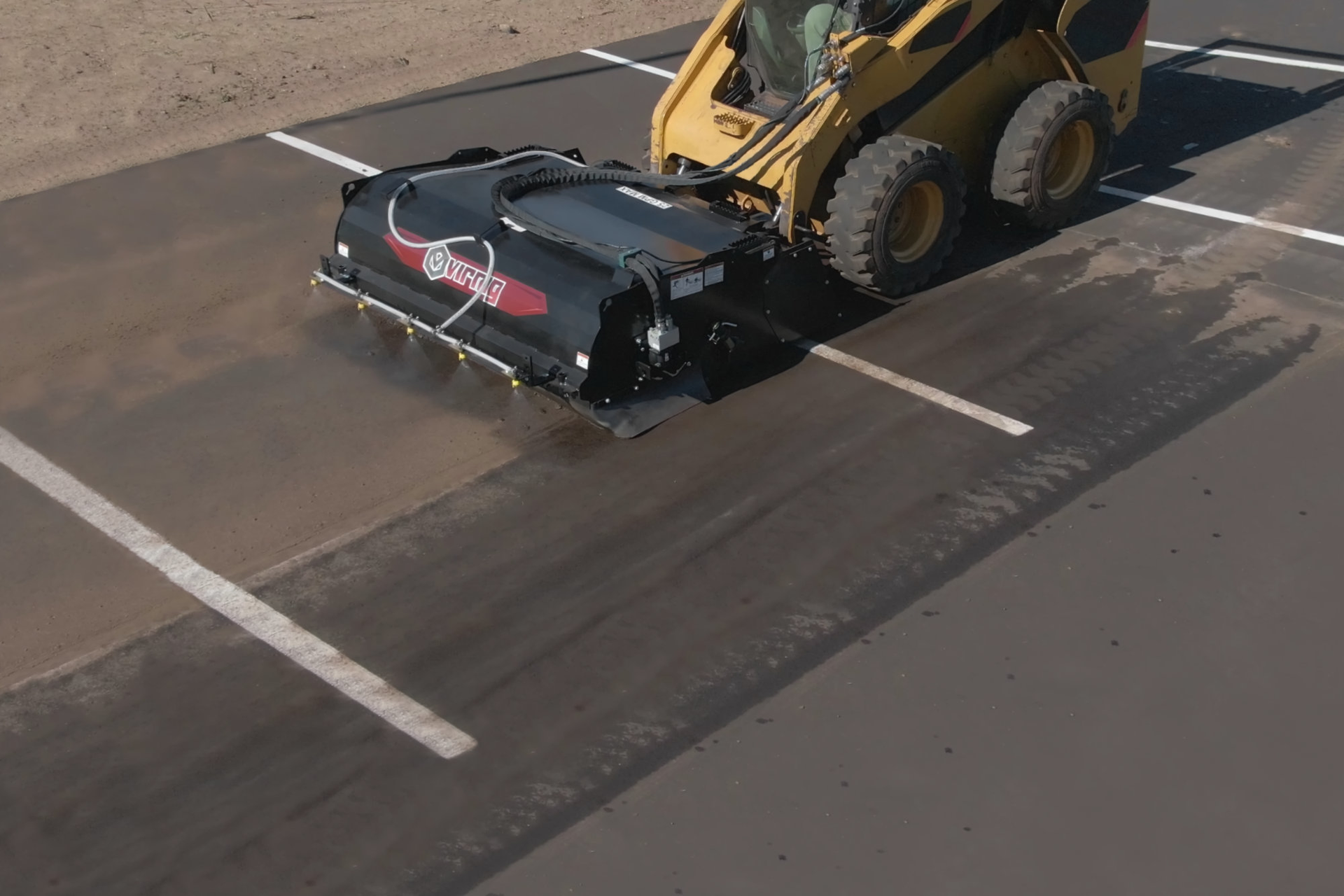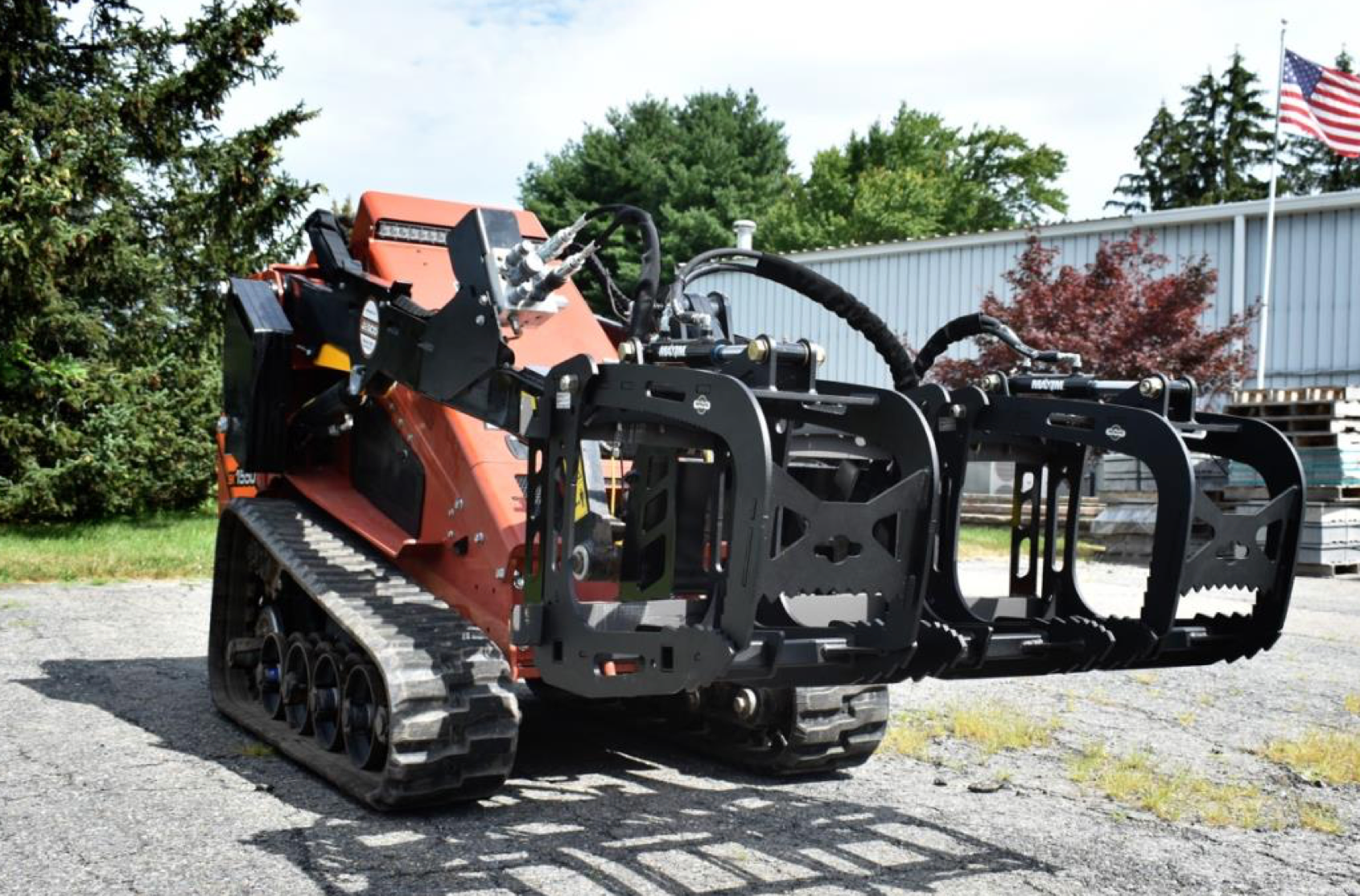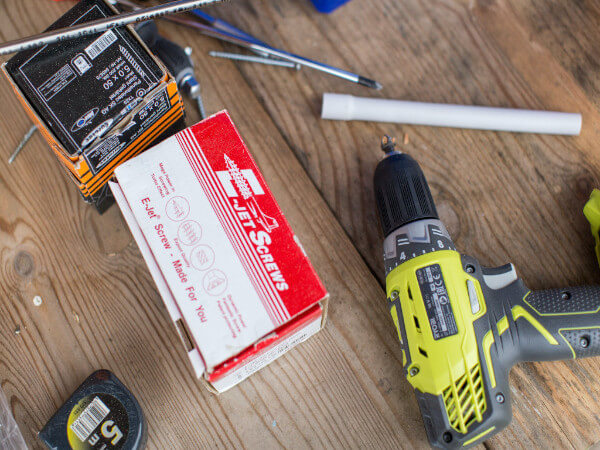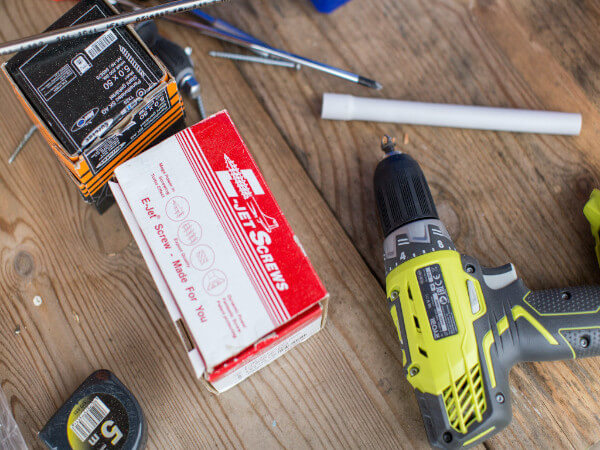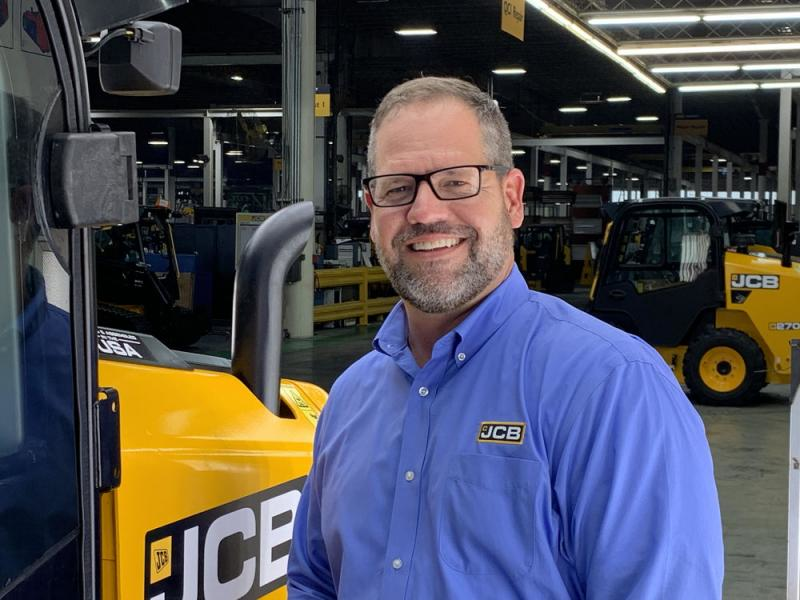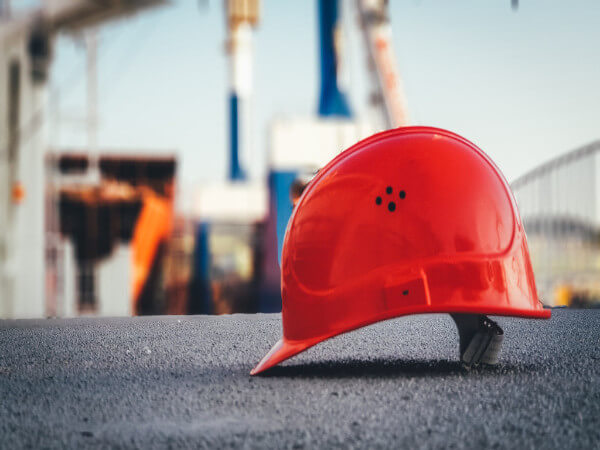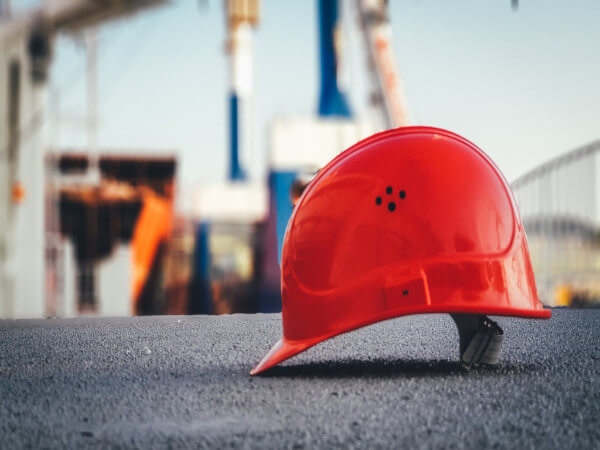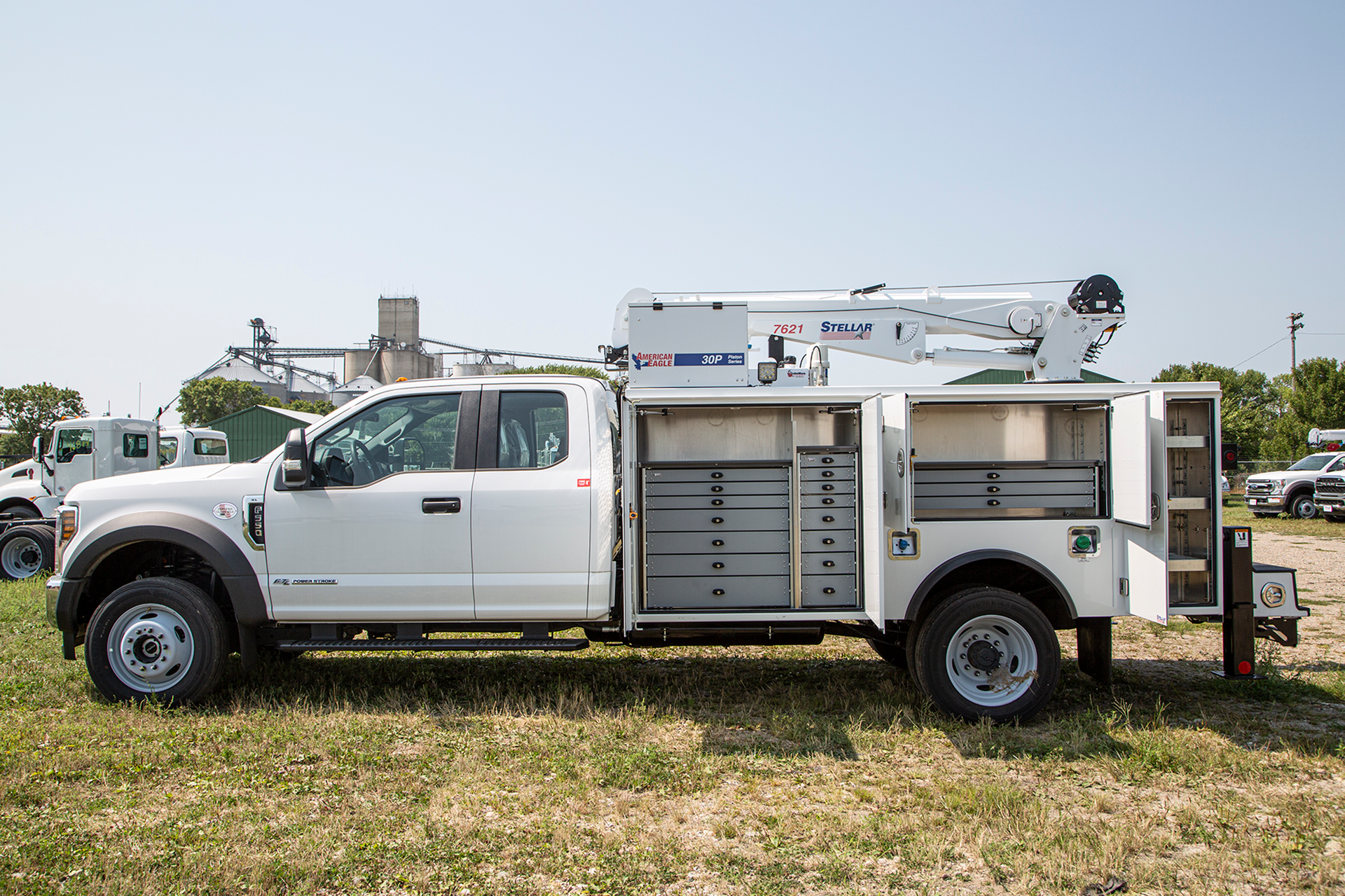Caterpillar has updated its 8- to 10-ton wheel loader line with a slew of standard technology features aimed at reducing maintenance costs, increasing operator productivity and improving fuel efficiency. Models joining the Next Generation lineup include the 966, 966 XE, 972 and 972XE.
“Every industry is seeing a shortage of labor. Anything that we can do to make these machines easier to operate, bring novice operators in, train them up and make them productive as soon as possible is where we’re focused on helping the industry,” says Bryan Cherry, Caterpillar global product marketing consultant.
The new machines ditch the lettered nomenclature and replace the M-series loaders unveiled in 2013 and upgraded in 2016.
All four models are powered by a Cat C9.3 B engine. The 966 and 972 models use smart technology to move more tons of material per hour, increasing productivity by up to 10 percent.
The 966 XE and 972 XE models use a continuously variable transmission (CVT), resulting in 35 percent better fuel efficiency than the standard transmission M-series. Prolonged service intervals plus efficiencies gained through the CVT powertrain result in even lower maintenance costs of up to 25 percent, further reducing operating costs.
Technology boosts efficiency, productivity
No more worrying about under- or overloading trucks leaving the yard. All four models feature standard Cat Payload with Assist. Operators can load to target the first time every time.
“The highest instantaneous fuel burn of a loader cycle is during the dig, not while traveling around,” says Scott Schmidtgall, Caterpillar product application specialist. “Assist features are focused on reducing fuel burn, getting more material in the bucket and lessening operator fatigue.”
Auto Set Tires reduce tire slip and wear by promoting proper loading techniques. “As you go into the pile, it provides lift command to set those front tires to make sure you have traction and that you’re not slipping, making for more efficient operation,” says Cherry.
Pair Auto Set Tires with the new Cat Autodig and the job becomes almost effortless. Autodig will automate the entire dig cycle from entering the pile all the way up through where you want to dump into the truck or whatever height you want to stop at. It’s a feature that benefits novice and experienced operators alike.
“You can put your senior operator in that cab and go through and record in Autodig. Then, put your new person in and he or she can see exactly what that 20-year veteran just did and how they got their bucket full,” says Cherry. “Or if you’re an expert operator and you go get that full bucket in the morning – and don’t want to have to do those controls – you can just replay that dig all day long.”
Optional Cat technologies help to further increase productivity and operation profitability of the updated series. Tip Off Assist helps operators hit the right tonnage every time. “Push a button and hit dump and that machine is going to tip the material off for you,” says Cherry. “It’s going to tip until it hits 10 tons. It’s going to rack back telling you that it’s done, and now you’ve accurately hit that last pass. It takes all the guesswork, all the anticipation and all the mental awareness from the operator out of the equation.”
Built with safety in mind
The most important thing on the jobsite is keeping people safe, and the Next Gen wheel loaders come with several new and enhanced features to increase visibility and awareness.
A high-definition rearview camera comes standard, or contractors can upgrade to the multi-view vision system for a 360-degree view around the machine.
Cat Detect radar technology is another optional feature for those looking to take safety to the next level. “Think of your car. We have radar out the back of the machine, so when you go in reverse, it is identifying any objects that are behind you and giving an audible alarm and a visual alarm in the cab,” says Cherry.
Standard monitored seatbelts can be enhanced with an exterior beacon to allow for easy checks of proper safety procedures. “There’s a green light in the cab and behind it. When you click your seat belt on, that green light illuminates,” says Cherry. “It’s very easy for a jobsite superintendent to drive around the site and know if that operator is wearing their seatbelt or not.”
Optional service lighting and access lighting allows operators to see in and out of the cab during those late-night and early morning shifts.
Fuel efficiency and performance
Productivity sees a bump while fuel burn continues to trend down on the Next Gen wheel loaders. Increases in performance and fuel efficiency in the 966 XE and 972 XE are made possible through the Integration of the CVT powertrain, engine, hydraulic and cooling systems.
The H-series released in 2005 averaged 5.75 gallons of fuel burned per hour. Today’s 966 XE averages 3.1 gallons per hour – that’s a 45 percent reduction over the H series and a 15 percent reduction over the M-series with powershift transmission.
Without the torque converter of mechanical drive systems, these loaders independently control engine rpm and machine speed to provide efficient digging, fine control and operation. Operators will experience smooth, fast accelerations and high speeds on grade with the CVT design. Speed-hold and anti-rollback features also enhance machine maneuvering on grade.
Advanced rimpull control helps to reduce tire wear and delivers optimal loading efficiency in the pile. Beyond saving fuel, the lower rated engine speed of the XE models reduces component wear and makes for quieter operation.

Less downtime ahead. The 500-hour service intervals have been eliminated on the 966 and 972 next generation wheel loaders.Equipment WorldMaintenance savings
Next Gen loaders can spend more time at work thanks to extended maintenance intervals for fluids and filters. The 966 and 972 series design extends maintenance intervals to 1,000 hours and eliminates the 500-hour service intervals.
An integrated optional Autolube reduces daily maintenance and increases component service life, while convenient access to hydraulic and electric service centers makes servicing the loaders fast and easyCombined, these design updates reduce maintenance costs up to 20 percent for the Cat 966 and 972 models and up to 25 percent for 966 XE and 972 XE loaders.
Technology also plays a role in improving loader servicing. Helping to manage fleet location, hours and maintenance schedules, the Cat App provides alerts for required maintenance and assists with requesting service from the local Cat dealer. Remote Troubleshoot connects the machine to the dealer’s service department via the internet to quickly diagnose fault codes without on-machine cable connection. Additionally, Remote Flash ensures the wheel loaders are operating with the most up-to-date software without impacting the production schedule.
Enhanced cab comfort
The Next Generation loaders got an all-new office as well. The redesigned cab features the following improvements:
Dynamic damper seats slow down travel for a smoother ride than an air cushion alone. Options include heating or heating and ventilation for year-round comfort.Sound suppression, seals and viscous mounts decrease noise levels for a quieter work environment.Seat-mounted electrohydraulic joystick steering reduces operator fatigue and provides better visibility than a steering wheel. (Bonus, this switch adds two more inches of legroom than the previous series. An HMU steering wheel is available as an option for the 966 and 972 powershift models.)A new dashboard and high-resolution touchscreen display provide intuitive and user-friendly loader controls.Application profiles set multiple machine parameters with the press of a button and can save more than 40 different operator settings.A wide door that unlocks remotely from the ground plus incline steps eases cab entry and exit.
Choosing the right wheel loader for your operation
So, which medium wheel loader should contractors choose for their needs? Other key differences between the models include engine horsepower, counterweight size and linkage. (See our quick specs below for more details.)
Available in capacities ranging from 3.75 to 18.25 cubic yards for the new 966 and 972 loader series, Cat Performance Series buckets balance shape against the machine’s linkage for higher fill factors and better material retention than other designs with the same rated capacity. Fusion Quick Coupler buckets enable rapid tool changes without leaving the cab, so the loaders move quickly from task to task.
The 972 outfitted with a 7-cubic-yard bucket will move 15-17 percent more material than a 966 outfitted with a 6-cubic-yard bucket. “[The 972] would be more of a three-pass loader, whereas the 966, depending on the trucks that you’re loading, might be more in that four-pass range. That’s a whole extra pass,” says Schmidtgall. “You’ve got to determine, do my production requirements demand a larger machine or is a smaller machine going to be adequate?”
In addition, special purpose-built options for the loaders include a configuration that offers higher payload capability for loose-aggregate-handling applications. Industrial and waste models feature the guarding and reinforcement required for working at transfer stations, recycling facilities, scrap yards and demolition sites. For demanding applications like steel mills and slag handling, the loaders can be ordered in the steel mill configuration that incorporates additional levels of safety.
Quick specs
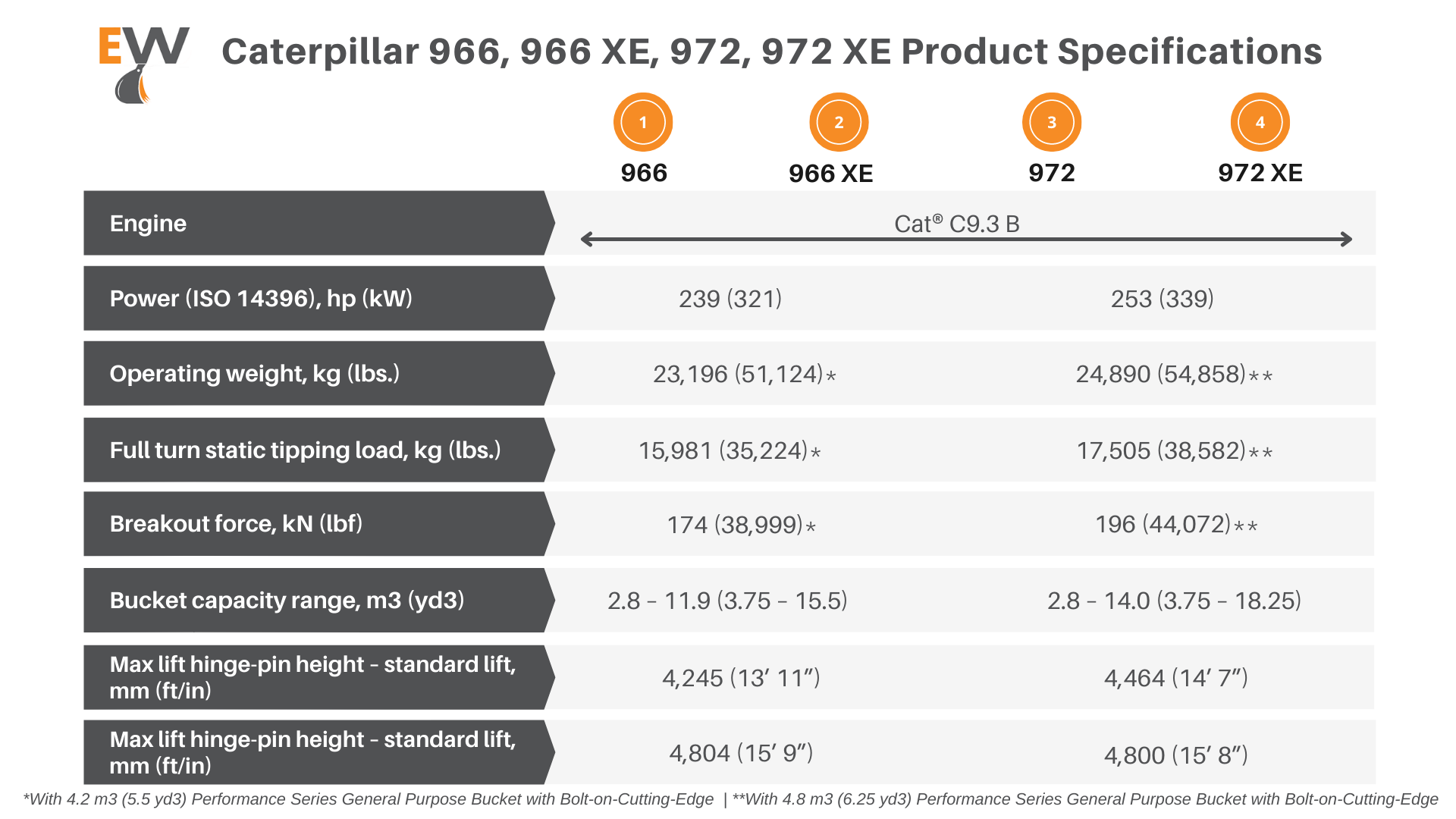
Caterpillar 966, 966 XE, 972, 972 XE wheel loader product specifications.Caterpillar; Graphic: Equipment World
Did you miss our previous article…
https://www.cityheartsaberdeen.com/?p=597
